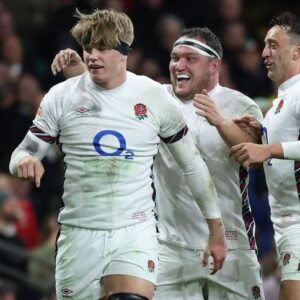Getty ImagesSimon StoneChief football news reporter1 hour ago618 CommentsIt’s been a busy few days at Manchester United.From agreeing to sign Matheus Cunha, speaking with Brentford’s Bryan Mbeumo, finding out Bruno Fernandes won’t be joining Saudi Arabian side Al Hilal and that Jadon Sancho will return from Chelsea, along with a £5m payment, it has been a whirlwind return from their troubled post-season tour of Asia.So, where are they now and what is their transfer strategy moving forward?What is Man Utd’s transfer strategy?Fernandes took a bit of time mulling over the Al Hilal offer after United head coach Ruben Amorim said in Hong Kong on Friday he thought his captain would stay at the club.The 30-year-old wanted to talk it through with his family as, after all, the sums being offered were truly staggering and could not just be dismissed out of hand.At this point last week, many at United thought Fernandes would go. Now we know he won’t.Lost amid his assertions about Fernandes, Amorim said something else that resonated.Knowing nailing him down on individuals and specifics would be impossible, I asked Amorim if he knew what he wanted his squad to look like when pre-season training began at the start of July.”Yes,” he said. “I have a clear idea what we want.”As you know, we are bit limited and can’t do it all in one summer. But there is a clear picture for what we want.”The initial approach – and as a guide it still holds – was to go for younger, hungry players, who can improve.That is the basis on which 20-year-old Denmark international Patrick Dorgu arrived in a £25m deal from Serie A outfit Lecce in February to address the problematic left wing-back berth. It was the same with 18-year-old Arsenal central defender Ayden Heaven.Both players made promising contributions, albeit in a struggling team.However, some issues are so urgently in need of addressing, no time for development is available.And, what Amorim wanted, as an absolute priority, was to reinforce his attack. Time and again towards the end of the Premier League season, the United boss had lamented his side’s ability to make the most of the chances they were creating.Between them, Wolves’ Cunha and Mbeumo scored 35 league goals last season. The campaign before, it was 21. They are proven in England in a way Rasmus Hojlund and Joshua Zirkzee were not before moving to United for a combined fee of almost £110m in the summers of 2023 and 2024 respectively.Two signings alone is a bit early to confirm a significant shift away from buying in from overseas – and the arrival of Mason Mount from Chelsea in 2023 is proof United had not completely ignored the domestic market before.But it does take out some of the risk when you buy players who know the challenges that lie ahead.”I think they are players who can come in and hit the ground running,” former United skipper Gary Neville told Sky Sports.”United has become a very difficult place for new signings to operate in the last 10 years. Cunha and Mbeumo have got Premier League experience and lots of games under their belt.”When I watch Manchester United’s wide players, they have to be able to get from box to box quickly, and they have to be able to travel with the ball and without the ball. Mbeumo and Cunha can do that, they both run forward with real intent and purpose.”The players who are going to leave are more jinkers and play in smaller spaces.”The great unknown is whether Amorim would play Cunha and Mbeumo – if he signs and, as yet, United have not made contact with Brentford – behind a number nine in the two ’10’ slots, or if one of them will operate as a main striker, or they will swap.Who could leave and what are the challenges ahead?Getty ImagesAmorim was adamant in Hong Kong that United could work around Fernandes staying at Old Trafford from a financial point of view.However, the situation is not straightforward.With no European football of any sort next season, finances will be tight. Amorim has already said he can operate with a smaller squad given there are fewer matches, so sales are inevitable.Broadly speaking, there are three categories.Players Amorim just does not want – so the likes of Sancho, Antony, Marcus Rashford and Alejandro Garnacho.Players who have struggled and it would make sense to sell – Hojlund and Zirkzee fit into this group, as does Casemiro.Then, the bulk are players who have something to offer and United would be open to keeping but would let go if the right bid came in.Yet the major issue around all of this is how long would it take to do a deal and how much would it cost?Take Sancho for example.It has been established Chelsea would have signed him on reduced terms, which he was not prepared to accept.If a Premier League club that has just qualified for the Champions League are baulking at Sancho’s wages, it is fair to assume most other clubs will reach the same conclusion. If Sancho refuses to drop his demands and Amorim wants him out, United will have to negotiate some kind of compromise.This puts them back in the uncomfortable position of paying a player to play for a rival. It is the kind of situation minority owner Sir Jim Ratcliffe finds so irritating and wants to end.Yet, when you take a realistic approach to Sancho, Antony and Rashford in particular, it is hard to see how that situation is avoided. The same could also be said of many United players who remained at the club last season.The matches may have finished but for United technical director Jason Wilcox and chief negotiator Matt Hargreaves, the hard work is just beginning. It is how well they do, getting players in and out, that will determine how much progress Amorim can be expected to make.Related topicsManchester UnitedFootball
Read more Getty Images
Getty Images




